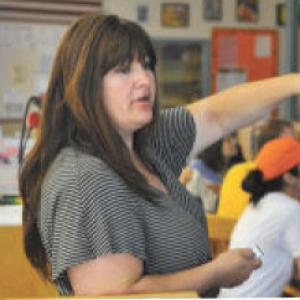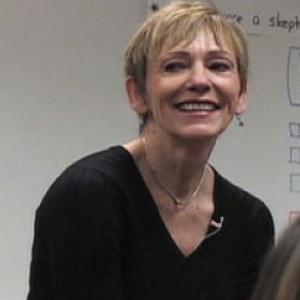Mentors of Mathematical Practice
Teaching is a formative profession– educators strive to improve and refine their practices every day. In pre-service teacher preparation, it’s common for novices to observe and interact in partnership and apprenticeship with thoughtful, experienced educators. But once we have our own classrooms, that opportunity to observe such colleagues diminishes. This section of Inside Mathematics invites you into the practices and reflections of several practitioners whose teaching incorporates a broad and deep approach. We call them "mentors of mathematical practice."
Although the Common Core identifies eight standards of mathematical practice and Inside Mathematics highlights the ways in which all eight are evident in many different classrooms, our featured mentors, Mia (3rd grade), Fran (5th/6th grade), and Cathy (9th/10th grade), commonly engage their students in multiple practices simultaneously. We invite you to explore their classrooms to learn how they engage their students in mathematical habits of mind.

Mia Buljan (2nd and 3rd Grade)
View My Page
Fran Dickinson (5th/6th Grade)
View My Page
Cathy Humphreys (9th/10th Grade)
View My PageClassroom Environments to Support Content Learning
To support their students’ content learning, Buljan, Dickinson and Humphreys have established a rapport with their students and a set of norms for students to turn and talk to each other as they work together. We don’t expect teachers or students to immediately establish this climate on the first day of school, but even from the first day teachers can establish a context for students to engage in mathematical thinking. These educators serve as facilitators in their lessons—they lay out the task, and then invite the students to dig into the problems.
In these classrooms, students have mathematical conversations and are able to state their thoughts, and are also comfortable with making uncertainty explicit. In Buljan’s classroom, for example, she actively engages her students in sharing their reasoning and critiquing the reasoning of others. In Dickinson’s classroom, he and his students use a hand signal to make any dissent, disagreement, consensus, and confusion explicit. In Humphreys’ classroom, a poster reminds students that the problem solving process is a circuitous "tinkering" cycle, not a vector from problem → solution. In their classrooms, it’s okay to say what you think, and it’s also okay to disagree and change your mind. Too often, students’ reaction to mathematical confusion is silence. We believe these classrooms demonstrate a way to honor the process of developing mathematical understanding in students. The students’ independence in their math work rests on a climate of acceptance and mathematical risk-taking.
We invite you to engage with our mentors and their teaching methods within each of their pages.

